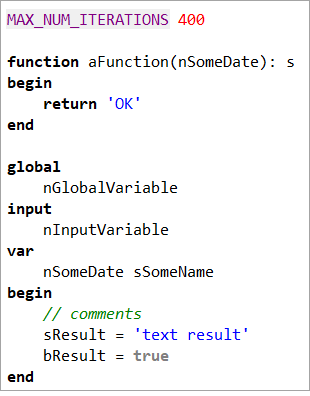
barebones do-nothing macro showing all the necessary and optional parts of a macro
So far, in our presentation of the Macro Language, we looked at the types of data which can be used, then we saw how variables can be used to store this data (or values), then how operators, expressions and functions can be used to obtain a value from a combination of literals, variables and even other nested functions and expressions.
Macros are made up of 2 compulsory, and 4 optional, blocks of instructions.
•Compiler Directives (optional)
•Function Declarations (optional)
•Global (optional)
•Input (optional)
•Var
Note that when any of the optional block do appear, they must appear in the above order.
In the next topics we will see how all these part must be organized into a macro to be able to use it.
Topic 108109, last updated on 24-Sep-2025